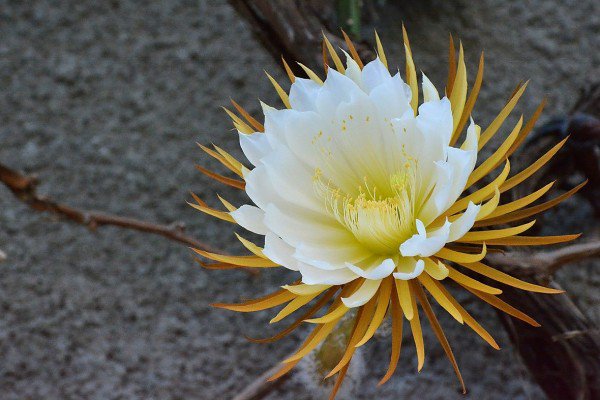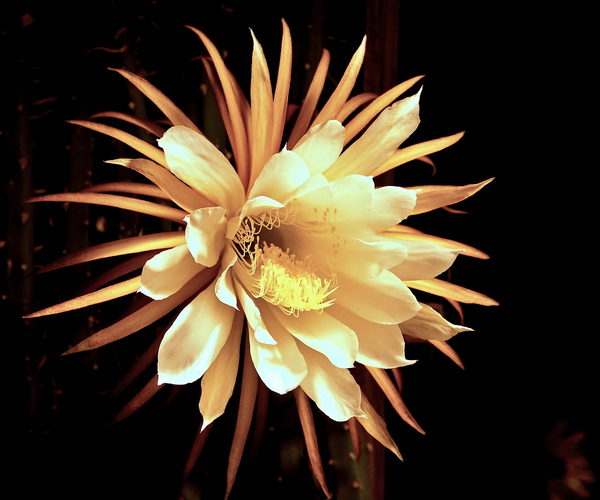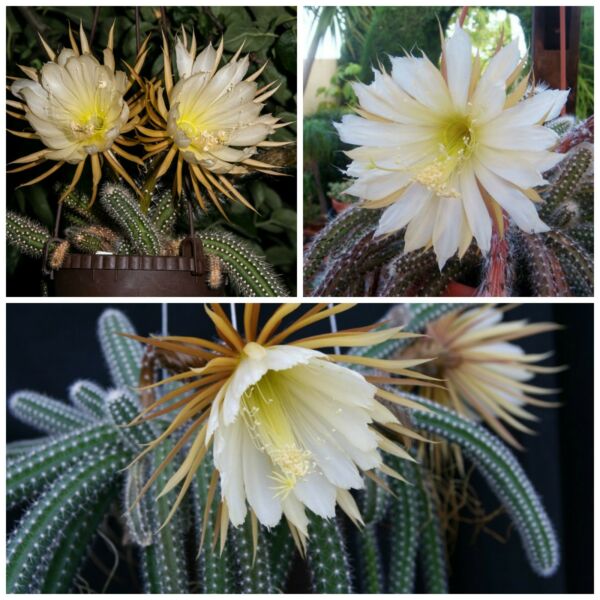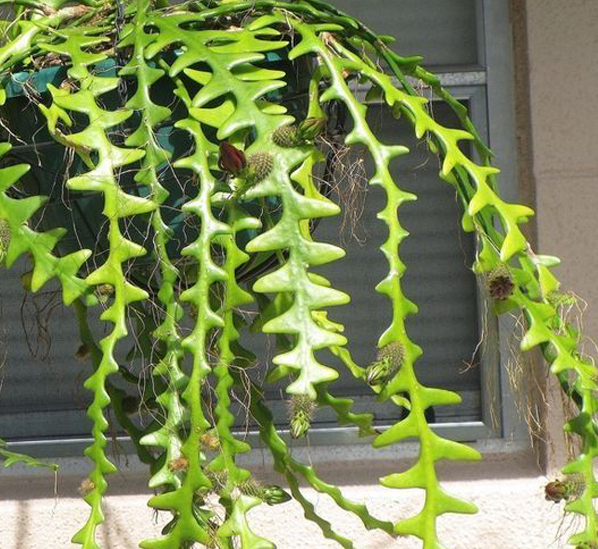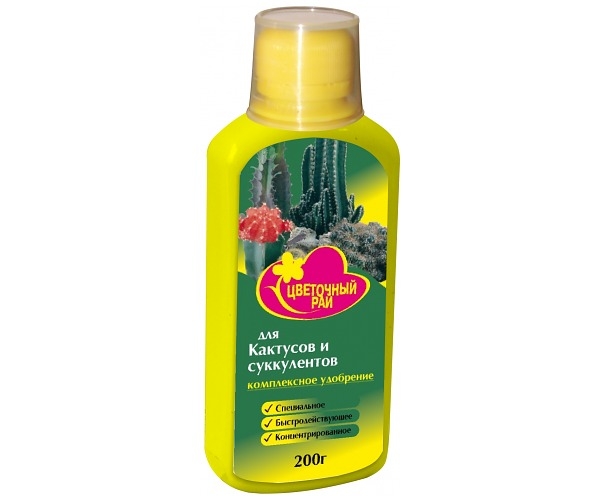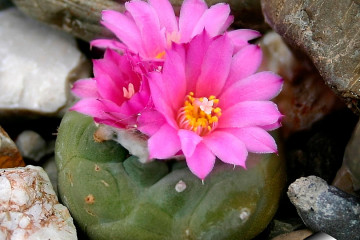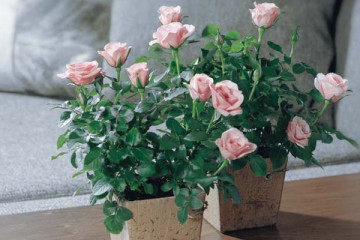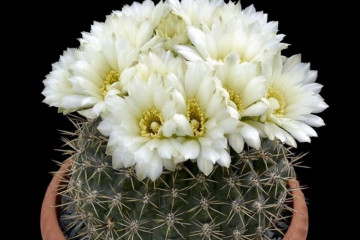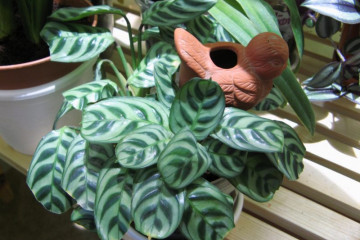Selenicereus grandiflorum - home care
Content:
The selenicereus cactus is a common houseplant. The only peculiarity is the appearance of large buds with a strong aroma for one night. In Russia, you rarely meet him, perhaps that is why the description of the plant and the methods of cultivation are of great interest. It is noteworthy that ordinary people call this indoor flower "Queen of the Night".
What does a selenicereus look like
Selenicereus The Queen of the Night is a member of the Cactaceae family. The culture is interesting with aerial roots located on the thinnest shoots-lashes. Due to them, the plant is attached to any support. Shoots 12 m long do not exceed 3 cm in diameter.
Common varieties
At home, the following varieties are most often found:
- Large-flowered (Selenicereus grandiflorus)
Selenicereus large-flowered, it is also grandiflorus has multifaceted, slightly curling stems, up to 3 m long. The dark green shade with a slight silvery tone of the branches attracts attention, there are thorns on the shoots that disappear when the plant matures.
Creamy yellow buds with a diameter of 27-30 cm have a sweet vanilla aroma. Flowers open for several hours; under a favorable regime, the culture blooms several times per season.
- Anthony (Selenicereus anthonyanus)
Selenicereus anthonyus, as it is called in Russia, is distinguished by a non-standard type of shoots that outwardly resemble fish bones. The branches are flat, fleshy in width up to 15 cm, length - from 2 to 4 m, with an emerald green color. The buds are light in the middle, bright purple around the edges.
- Hook-shaped (Selenicereus hamatus)
On the entire surface of the faceted stems with a bluish-green tint, there are spines resembling spurs.
Shoots grow up to 12 m, the buds have bright yellow stamens and a diameter of 20 to 25 cm.
- Macdonald (Selenicereus macdonaldiae)
Outwardly it resembles Grandiflora (grandiflora). Differs in orange petals.
Selenicereus named after Mrs. MacDonald is named in her honor because it was she who sent the species to the Royal Botanic Gardens (London).
- Validus (Selenicereus validus)
The classic variety with stems up to 0.7 m. The petals located inside the buds are painted white, and the outer ones are cream or brown.
- Selenicereus wercklei
It has buds up to 16 cm in diameter, with inner purple-white and outer white-greenish petals.
Features of caring for a flower at home
The cactus is not often found in apartments due to the erroneous opinion about the complexity of care. Many growers are constantly engaged in the variety and do not consider it too capricious or demanding.
- Temperature
In the summer heat, the plant lives at a temperature of 20-25 degrees. In winter, it is moved to a cool room, with a temperature of 15-17 degrees.
- Lighting
Direct sunlight cannot cause significant damage to the culture; most growers prefer to place pots on the south and southeast side.
- Watering
Moistening the soil is required after the top layer of the substrate has dried. Overflow is bad for the root system and can lead to rotting.
Watering is carried out with soft and settled water, with the addition of several granules of citric acid.
- Spraying
The variety does not need spraying on the stems. When carrying out hygienic measures, its stems are washed with warm water or wiped with a moistened cotton pad.
- Humidity
Culture grows and develops in an ordinary city apartment. She does not need humidifiers.
- Priming
The land is being enriched with mixtures for cactus and succulents purchased from a flower shop. At the bottom of the container, drainage is laid from finely broken bricks or special expanded clay.
- Top dressing
Accelerated growth requires a large amount of useful elements. Feeding is done three times a month, using universal solutions for cacti and succulents.
Features of care in winter, dormant period
After the arrival of November, the moistening of the earth is carried out once every two weeks, the culture is prepared for rest.
From autumn to early spring, fertilizers are not used - the first feeding is prescribed for March.
When and how it blooms
Initially, a tight ball of whitish hairs is formed. 20 days after the start of the process, the top of the bud appears.
How Selenicereus reproduces
Breeding a plant involves the use of seed or cuttings. The first option is used less often due to the difficulty of buying seeds.
Germinating seeds
The procedure requires the purchase of ready-made Selenicereus seed from a flower shop. In the room, he almost never matures.
The seeds are immersed in a slightly moistened substrate at a shallow depth. After planting, the container is covered with plastic wrap or glass, kept in a room at a standard temperature regime. After the appearance of young shoots, the covering material is removed.
Rooting of shoots
Cutting is considered the best option for flower propagation. Long shoots are cut into small pieces, slightly dried and rooted in moist soil.
The box is covered with polyethylene or glass, regularly ventilated and watered. Spring is considered the best time for the procedure. For her, only young shoots are taken - in the old branches of Selenicereus, rooting is worse.
Transfer
Young individuals of Selenicereus require transplanting work annually - they are carried out in the spring. Adult plants are transplanted only after vigorous growth, when the original pot is small.
Diseases and pests
In the description of the species, it is said that the main problem during cultivation is the development of root rot due to excessive moisture in the soil. The problem is solved by reducing the frequency of watering.
Spider mites and scale insects are isolated from pests of cactus. After the detection of parasites, the cactus needs to be treated with insecticidal preparations.
Selenicereus cactus, which blooms several times per season, requires actual supervision.Violation of watering rules can lead to the death of a cactus. But if everything is done correctly, the unusual exotic will definitely delight the owner.
